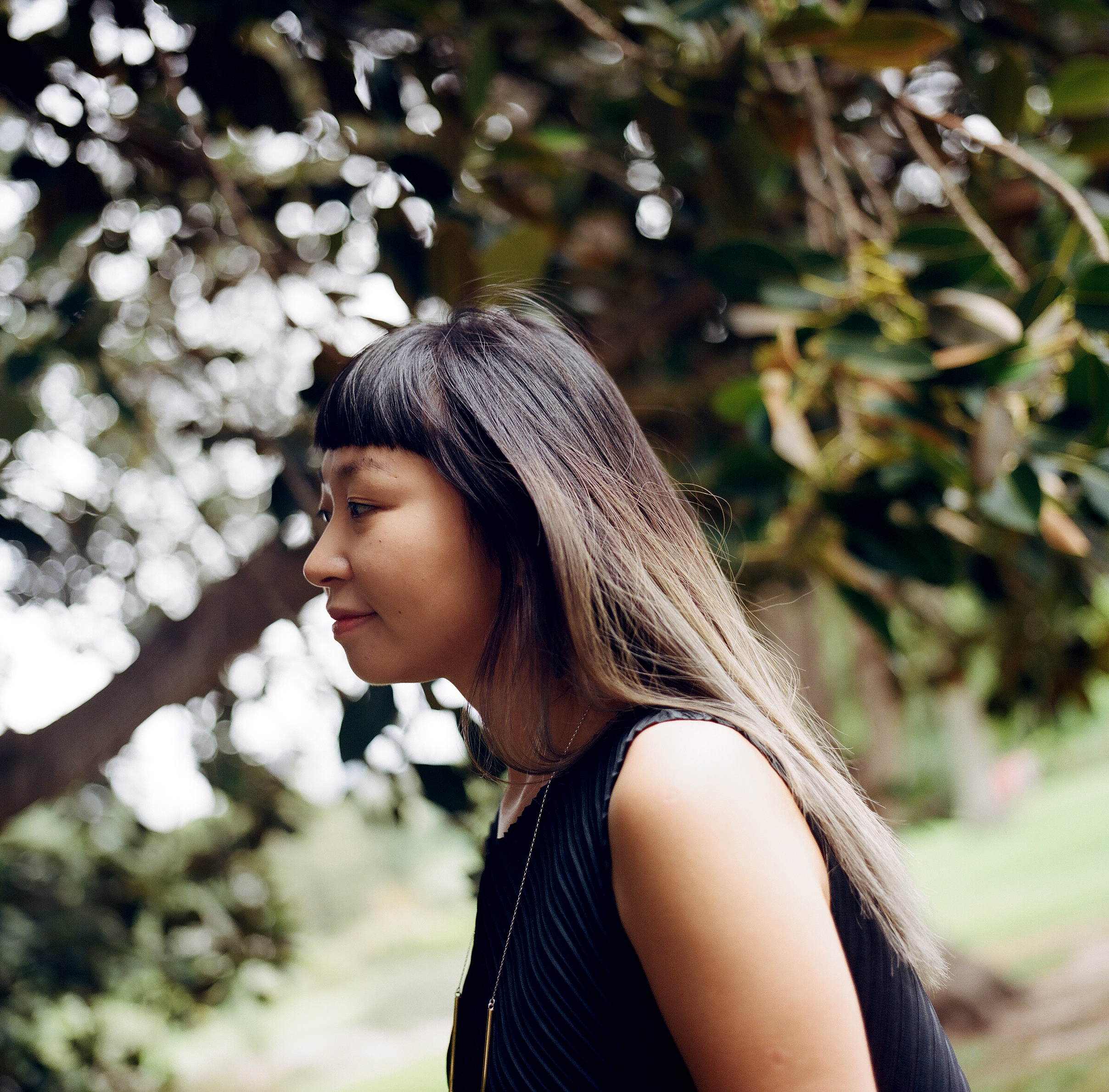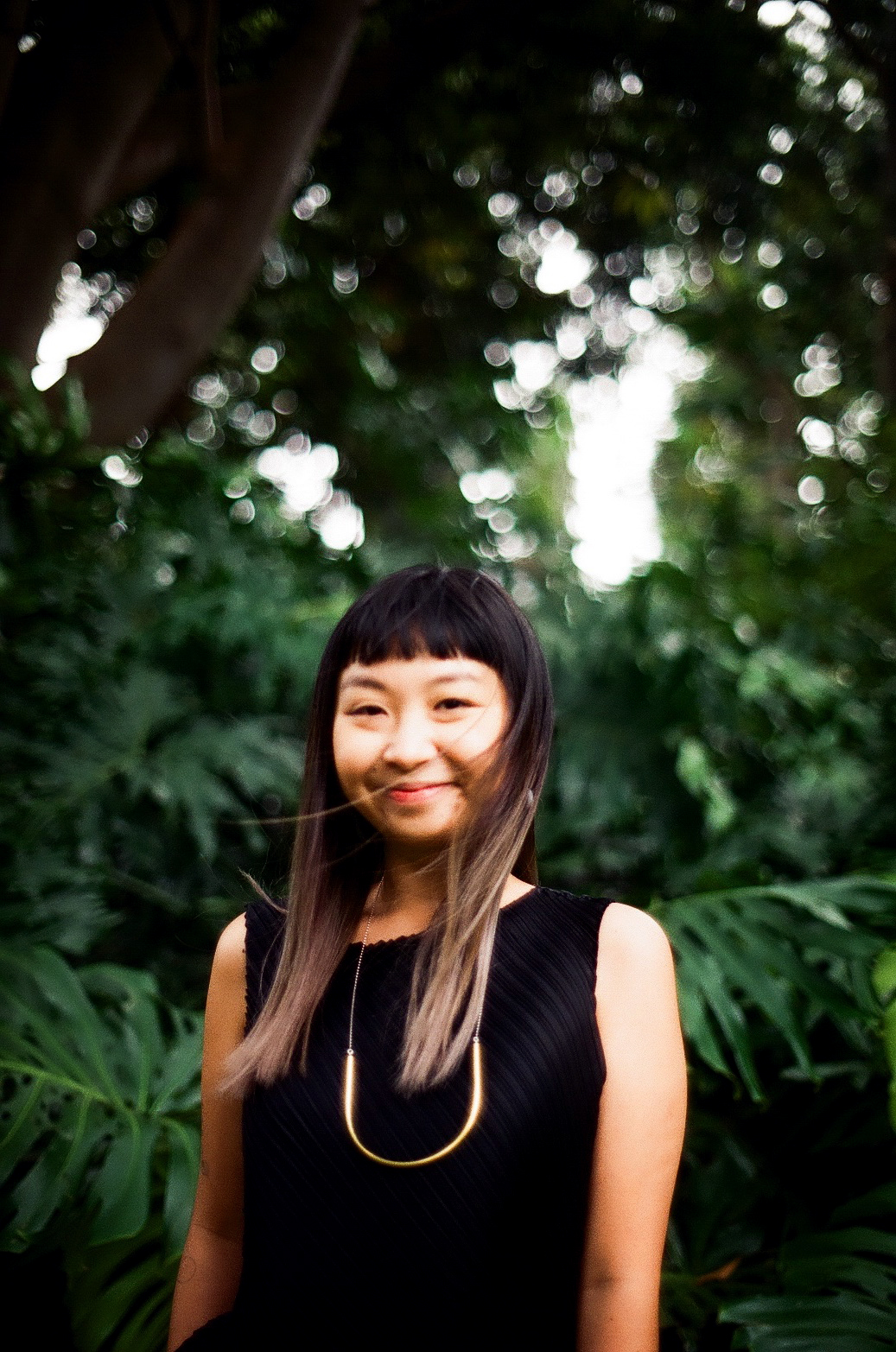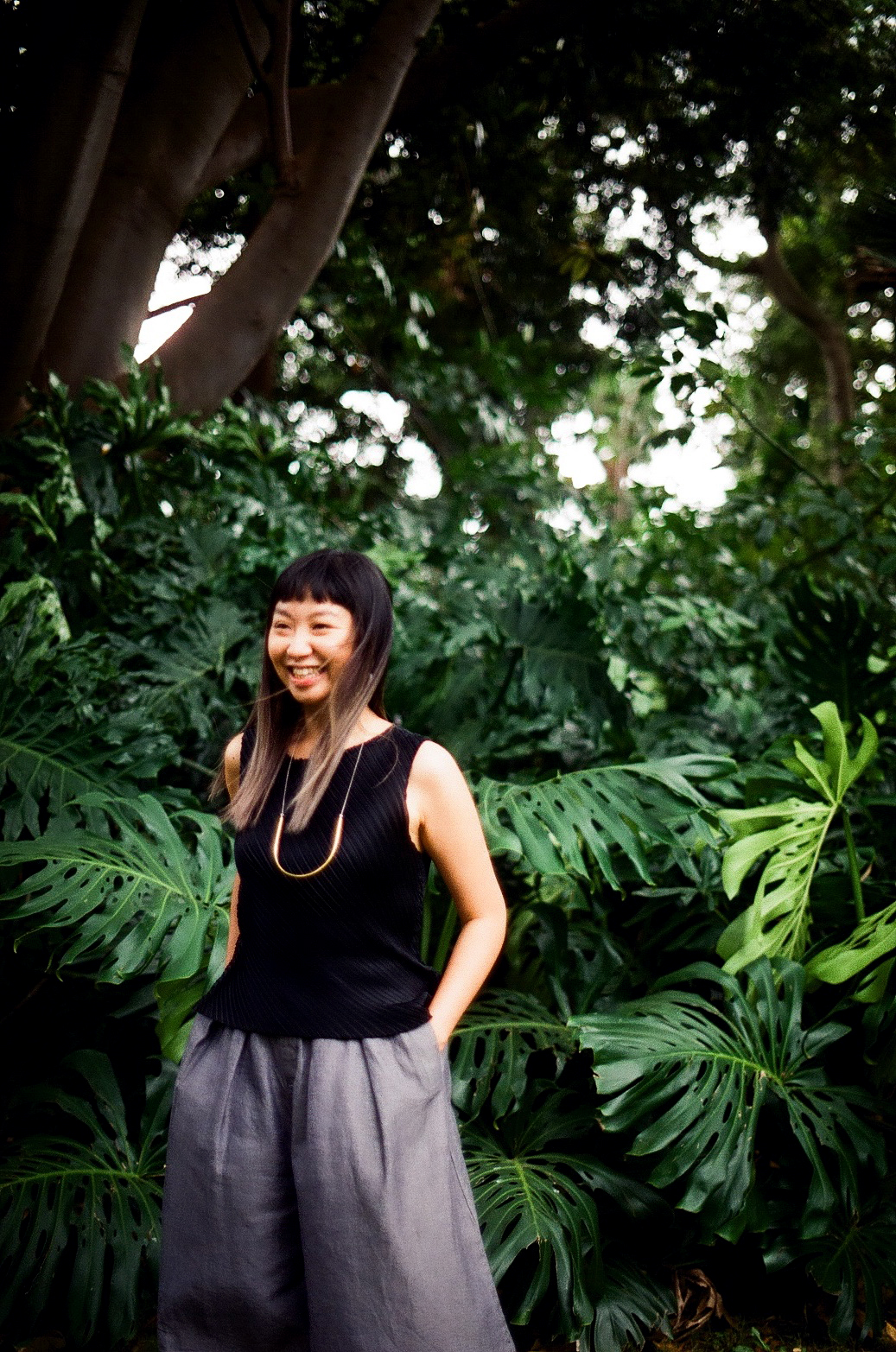Interview #55 — Nikki Lam
Interview by Sophia Cai
Nikki Lam is a visual artist, curator and arts worker interested in exploring the translations of hybrid identities, often through studies of rituals, language and representations.
She has worked as Artistic Director of Channels Video Art Festival, visual arts editor of Peril Magazine, as well as working for Footscray Community Arts Centre and Foundation for Art and Creative Technology (UK). Nikki is currently the studio coordinator at ACMI X, a co-working community of practitioners in the moving image sector at Australian Centre for Moving Image.
Nikki speaks to Sophia about hybrid cultural identities, the balancing act between artistic labour and value, and her love for karaoke.
You were born in Hong Kong and moved to Australia when you were sixteen. What were your initial motivations for this move? Did you have particular expectations of Australia before this?
This is actually quite a loaded question. It was more or less the usual international student story, but mine has led to my parents’ separation when I decided to move. For me, it was like some kind of teenage runaway. Looking back, it was a decision that I would have always made. Moving away alone at sixteen has become a cornerstone of my life.
I had little expectation of Australia at the time, I knew nothing really. Except I had one of those fluffy koala clips on the blue curtains in my bedroom, gifted to me by a family friend.
I was experiencing a lot of hardship at the time, both in school and at home. The decision to move was almost instantaneous, done within seconds — I remember thinking to myself one day, ‘I’d love to leave this place. Maybe Melbourne?’ I asked my mother the next day and I’d never forget her response. It was as if I was asking for small favours like getting a bike or learning piano, she paused for a few seconds and said, ‘if you really wanted to, of course,’ we had no idea at the time what it really meant for me, or the family, both financially and emotionally.
I interviewed for a school in Hamilton, Victoria and I was offered an arts scholarship. I remember everything felt like a dream. Leaving my life in Hong Kong was all that I wanted at the time. I never fit in as a kid, or a teenager, not even now as an adult. Always conflicted and never felt quite belonged. I don’t think I’ve ever grown out of that feeling.
Where and what did you study?
I graduated from Bachelor of Visual Arts, majoring in photomedia at Monash University in 2009. A few years later I completed my Executive Master of Arts at The University of Melbourne.
Your work often explores topics of hybrid identities and the complexity of belonging. In particular I am struck by your 2014 video work Falling Leaf Returns to its Roots, which is a visual response to the iconic Australian photograph by Max Dupain of the Sunbaker. By inserting yourself into this narrative, how does your work interrogate questions of Australian identity? How have audiences responded to this?
My relationship with Falling Leaf Returns to its Roots has evolved a lot since its first conception . At the time, I was trying to draw parallels between this process of becoming (identity), and my own visa saga in Australia. I now see the work as an attempt to challenge the dominant narratives around identity in Australia. The image is as ‘iconic’ as it is haunting, like an image that lingers in cyclical episodes. I feel rather uneasy looking at that image, as it reduces the complexity of the topic into a single notion, not to mention the very idea of a national identity is being built upon violence and stolen lands.
The relationship between Asia and Australia was also recently the focus of a group exhibition Hyphenated at the Substation in Melbourne. As one of the artists curated into that exhibition, how did you your work responding to the idea of an Asian-Australian identity?
Hyphenated, curated by Phuong Ngo and Tammy Wong Hulbert, was an exhibition that was framed as the first of a series that interrogates hyphenated identities, however the artists had more in common in terms of themes as supposed to our cultural heritage. Diversity has been at the core of the exhibition and it is so refreshing to have the opportunity to present work in a context that unpacks, or at least tries to, the complexity of hyphenated identities through woven parallels between Victoria-based artists who responded to the label Asian-Australian.
I had two works in the show, Falling Leaf Returns to Its Roots, and a new work Still… what is left. It seemed that most people have responded to Still… what is left in a way that I did not anticipate. The work is a two-channel video projections onto three perspex screens in parallels, where the image of a body repeating implicitly ritualistic gestures in the vast landscape of a salt lake. Sounds of water and bells accompanied the work.
It was installed in the basement of The Substation… it is a little bit difficult to describe the experience. But most responses have been that it was transcending, calming, reflective and lingering. I was trying to materialise what my memory of gestures felt like, and the in-between space that I ended up with. It’s a space without location, only fragments of movements over stretches of time.
It’s an image that sums up how I feel about my own hybrid identity.
From 2014 to 2016 you were the Artistic Director of Channels Festival, Australia’s only video art festival. What was your experience of working on this project? What were some of your proudest moments or highlights working on Channels?
If I had to sum up my experience with Channels, I would have described as the first massive project in my career. The committee at Channels took a risk on me and entrusted me with their festival, which gave me freedom to build a vision and transform the biennial festival to its current 10-day format. It was exhilarating, to lead and scale a festival. I had very little idea of what I was doing, but the artist-led motto and the team gave me a lot of strength to follow my intuition and actualise some wild ideas.
Prior to the role, I always struggled with the Melbourne art clique (you know the one). Channels of course opened some doors for me, without them I would not have had some of the professional opportunities like I do now. However it was also the kind of intense experience where I learnt so much about myself and the arts, that suddenly everything I thought I knew had to be re-learned.
From community building, inclusion, to the balancing act of labour and value, I had no idea, at the time, that the other side of the table would be equally challenging for someone like me. It made me realise how naive I was to think that my ambition to push for more inclusion and paying artists properly while delivering a festival without any experience was possible. And that all of these ambitions required years of practice, failures, advocacy and a supportive community—all of which I did not have in 2014.
I have been thinking a lot of the power imbalance between artists and curators / arts workers. Inequality runs so deep within this power structure. I believe that there is so much to be done, to be changed. It’s a systemic problem that is de facto to the value of artistic labour outside of the commercial art market, and how said labour is continuously exploited. It is particularly challenging for artists without privilege, where they have to constantly negotiate their priorities in order to survive, let alone to get the next big art opportunity. I think we need to do more than addressing these issues. Alternative fundraising models, co-ops, and more transparent presenting platforms are only a few ideas.
—
Inequality runs so deep within this power structure. I believe that there is so much to be done, to be changed.
—
Do you think artists and curators, predominantly those working in themes of cultural identity or interrogation, need to be careful about how the works of artists of colour are represented? Particularly at the risk of tokenism or stereotyping? How do you approach this in your own work?
Absolutely. Tokenism happens when there is clearly a lack of understanding of power from the curator or the presenter. A lot of people want to ‘do the right thing’, and while they can be incredibly articulate about how an institution or an exhibition might reflect diversity, more often than not, the community could feel alienated. It is problematic that the common curatorial framework for shows highlighting people of colour is often done without collaborating with communities, which leads to sloppy portrayal of cultural contexts or further othering of those communities. You can re-enforce quotas, but that is only the first step. Inclusion needs to happen at every level of the power chain in order for the complexity of cultural nuance to come through curation and stimulate audiences.
I think for me, respect always comes first, and I prioritise cultural safety regardless of who I might be working with. I don’t think there is any one way to navigate power but to become aware of your own privilege. It sounds easy, but when you are given an opportunity and you have a vision to change the world, checking your privilege often becomes the last thing on your mind. But I am exhausted by people with good intentions, so I need to constantly remind myself that I do not become one.
Today you work as an independent curator and artist predominantly in the field of the moving image—what excites you about this area?
The medium is multi-faceted, and video is such a mutant form that it keeps evolving in our everyday life. On one hand, I love that this century-old technology still manages to challenge us: from mixed realities to immersive installations to internet-based projects, it is a malleable form that is constantly responding to new technologies. On the other hand, I am still fascinated by what happens beyond the screen, the content’s relationship between space and time, performance and documentation. My interest jumps between the two and both are largely informed by the project I might be working on at the time.
If you weren’t an artist, what do you think you might be doing instead?
A chef, a food journalist, a food architect. Or running a small nursery.
What are some of your other passions or hobbies?
I enjoy cooking, nurturing plants, walks in the sun, scent of forests and ocean, dancing to Beyonce and I am very, very passionate about karaoke.
Do you have any advice for emerging artists or curators?
Don’t try to fit in, build your own community. You have more power than you think. Be fearless.
Who inspires you?
My mother, she is the most amazing person I know.
What are you listening to?
Solange, Sampa the Great, Rainbow Chan, Moses Sumney.
What are you currently reading?
I’m currently reading Sour Heart by Jenny Zhang. It’s a collection of Chinese migrant stories in America. It’s heartbreaking at times!
How do you practice self-care?
I’m terrible at it, particularly now that I’m working full time and maintaining a practice. But when I can, I try to make sure I take care of myself on a daily basis. Make time to eat breakfast, take regular breaks, say no to opportunities when I’m busy, make sure I cook regularly, and make time to spend with loved ones, get out of the city etc. At the end of the day though, I think it is about knowing your happy place and not letting yourself be too far away from it at any one time.
What does being Asian-Australian mean to you?
For me, being Asian-Australia is a political position as supposed to a label that describes someone based on their heritage and/or their hybrid cultural identity. I think it has always been complicated and potentially problematic to see a group of people with similar ethnicity as a monolithic whole.
I first came across the label when I was at university and at the time, I felt awkward and reluctant to identify myself as such. Being a migrant, one would challenge whether that hyphen is in fact a balanced one, with equal weight on both ends. It did not occur to me that I could claim it my own until I found a community that accepted me for who I am. It is fascinating for my younger self in Hong Kong to imagine I would ‘become’ Asian, let alone Asian-Australian, I thought I was just Hong Kong Chinese.
The community itself is incredibly diverse. I think for me, being Asian-Australian is about making sure we’re visible, breaking stereotypes, being respectful of each others’ different experiences and most importantly, holding space for all hybrid and hyphenated identities.
Interview by Sophia Cai
Photographs by Leah Jing McIntosh







